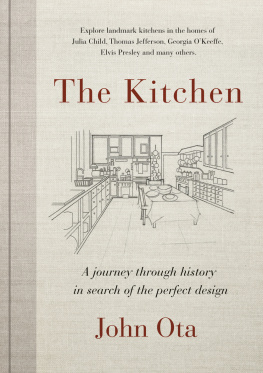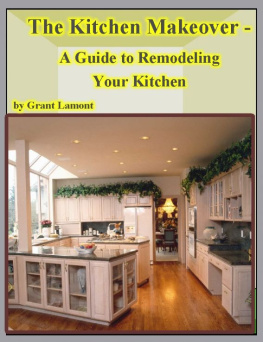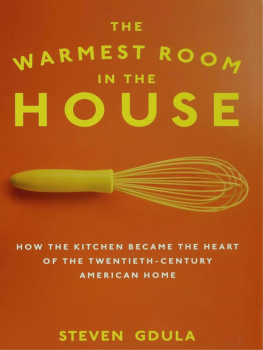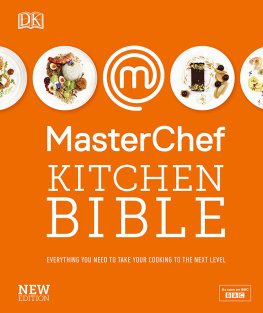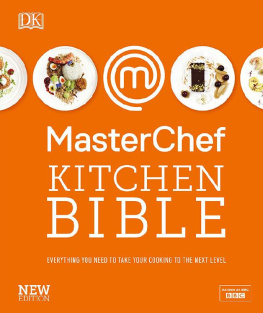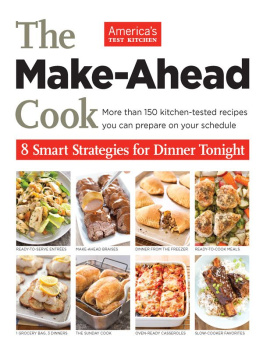ACKNOWLEDGEMENTS
I DIDN T KNOW that writing a book was a team sport.
But it is.
When my friend Jim Polk heard I was writing a manuscript, he said, Youll have to have a good team. I didnt know what he was talking about. I thought writing was a solitary activity. I was so wrong. I have been lucky to be part of a great team.
There are so many people to thank for their help with this book. Unfortunately, there is not enough space to name them all. But I hope you know who you are.
Number one, I thank Frances Rowe, who is my wife, partner in life, social convenor, CFO and psychiatrist. For the last few years, this person has been living with a maniac, demanding complete silence in the house and disrupting planned vacations at the very last second as I search for another kitchen.
I am most grateful to Robert McCullough, publisher of Appetite by Random House, Penguin Random House Canada, for taking a chance with an unknown author. My literary agent, Carolyn Swayze, and associate agent Kris Rothstein encouraged me from the start, gave me sage advice and have always been in my corner. Cynthia Good and her class at Humber College connected me with Maria Coletta McLean. Maria taught me invaluable lessons on how to write and what to read and introduced me to Carolyn Swayze. Shaun Oakey, vigilant copy editor and guardian angel, caught and corrected countless mistakes and made valuable suggestions for improving the text. Thank you to PRHC designer, the brilliant Leah Springate, for beautifying this book, inside and out. Thanks to Ward Hawkes, Lindsay Vermeulen and all the team at PRHC for their design and publishing support. For their relentless positive advice, I am grateful to friends Jim Polk, Eddy Yanofsky, Anne Lewison, David Lillico, Tim Lindsay, Fred Cane, Dale Hauser and Jane Simmons. Paul McLaughlin, Lyn Hamilton and my first grade teacher, Mrs. Lennox, have been my life writing mentors.
Thank you to Paula Johnson, Margaret Wood, Emily Butler, the Palumbo Family, Karen Edwards, Miriam Bader, Becky Nicolaides, Sheryl Scott, Charles Perry, Kathleen Wall, Eleanor Gould, Jennifer Dyer, Gail Simpson, Nidhi Sheth, Ed Lyons, Joyce and Paul Pearlstone, Grace Kamitakahara, Katherine Redd and the late David Reese, who are among the fabulous cooks, historians, curators, tour guides, writers and architects who devote their lives to preserving historic houses and promoting culinary history. Sylvia Lovegren and members of the Culinary Historians of Canada were a constant source of information and encouragement.
My brother Chris called me from LA continuously with creative ideas on writing and marketing, and accompanied me on cooking trips.
On every team there is a Most Valuable Player and here that person is my editor, Tim Rostron. Tim led a first-time author through the labyrinth to transform the manuscript into a book. I thank him for his patience, ideas, vision and his ability to make this all happenMVP, MVP, MVP
And finally, and most deeply, I thank my friends, neighbours, relatives and acquaintances who asked about the book, gave me encouragement and shared their thoughts with me about the kitchen.
Thank you. We are all members of Team Kitchen.
J.
POSTSCRIPT
THANK YOU FOR READING this book. I had so much fun writing it. I hope it sheds some light on your house, your kitchen and your food.
Kitchens, like people, come in all shapes and sizes. Some people like cluttered kitchens, others like clean, austere surfaces, some like closed off and square, some like round and open to the living space. There is not one template for a perfect kitchen. Whatever works for youwhether it is for cooking, eating, entertaining or as a fashion statementI hope that you enjoy your kitchen.
What does the future look like for the North American kitchen?
Kitchen islands will morph into the focal points not only of the kitchen but of the entire ground floor of the house. In the same way Lucille Armstrong made a design statement with her curvy turquoise cabinets, the island will provide glitz, with under-counter appliances, televisions, computers, compact cultivators to grow herbs and salad greens and, of course, be the family dining table. It will become more beautiful and spread right into the living area.
From faucets to fridge to coffee maker, technology has entered the house like a tsunami, and the kitchen will be the nerve centre. Built with interior cameras and LED screens, the refrigerator will track whats inside, how much and how fresh. No more running out of milk. When you are running low, the smart fridge will contact the grocery store to make a delivery.
Most of all, the kitchen will continue to be the most important room in the houseand more. As life becomes faster and family members become increasingly isolated in their private rooms, the space where we come together for a shared meal will become more treasured. Other separate rooms will become obsoletethe dining room, living room, family roomthe walls will disappear. The kitchen will take over the social spaces of the house. We can already see it happening in the Pearlstone House, where the kitchen has become the great room combining the social and food-preparation activities of the house. The kitchen expands inside and to the exterior. We have come full circle back to the Pilgrim kitchen at Plimoth.
It may not seem rational for a late-middle-aged man to have been criss-crossing North America on his own to look at kitchens. I met wonderful people on this journey and I learned a lot about historic houses, kitchens and food. I also learned why I like to visit kitchens so much.
Do you ever wonder why at a party most people gather in the kitchen?
My answer: There is less anxiety there.
Sure, its where the food is, but theres more to it than that. At a party where you dont know anybody, its much easier to start a conversation in the kitchen. Guests dont have to sit in the oh-so-important living room and impress each other with clever conversation and job titles.
The kitchen is informal, friendly, and it doesnt matter if you spill your red winethe kitchen is where youll find the paper towels. There are always little jobs to do in the kitchen to help the host or hostess, which also leads to friendly chatter. You can move around, jump in and out of conversations, talk about what really mattersthe food. At a party, it is the kitchen where we go to relax, laugh and eat. It is a great anxiety-reducer and social equalizer.
Maybe, in the end, what we are seeking in the kitchen is peace of mind, comfort, happiness.
And memories.
I am looking for my grandmother to make me cinnamon toast and hot chocolate for breakfast on a dark and cold morning before school.
I am looking to stay up with my mom till three in the morning, rolling sushi on New Years Eve.
I am looking for my parents, aunts and uncles so that we can eat, drink and laugh together.
God, I miss them. I truly believe that on the day I die, I will see them again. And I know that when I find them, itll be in the kitchen.
J.
RECIPES
THE FOLLOWING ARE GIVEN in their original formats. I hope you agree that the different styles and formats give a small insight into the personality of the author, the type of kitchen where they cooked and their historical period. Together, they reflect the evolution of recipe writing, kitchens and cooking in North America. Further recipes relating to this book can be found at www.johnotahome.com.
Chapter 1: PILGRIM KITCHEN
To boyle a Ducke with Turneps.
Take her first, and put her into a potte with stewed broth, then take perselye, and sweete hearbs, and chop them, and perboyle the roots very well in an other pot, then put unto them sweet butter, Cynamon, Gynger, grosse Pepper and whole Mace, and so season it with salt, and serve it upon soppes.

